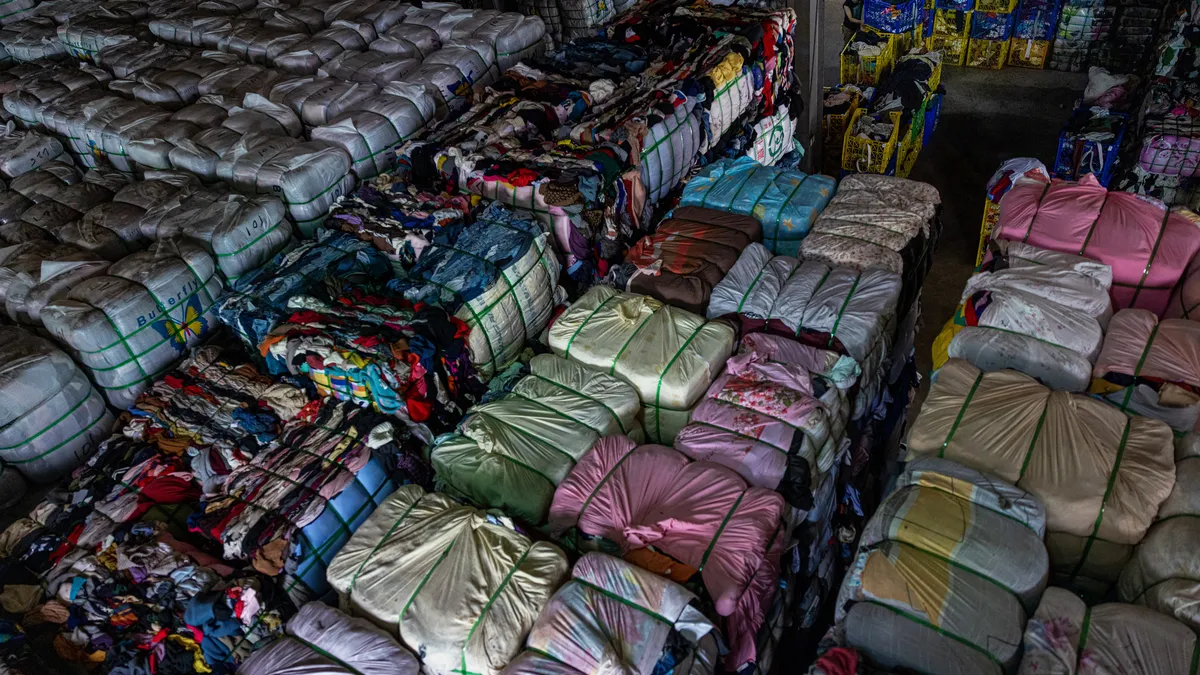Dive Brief:
- Kearney released its annual CFX report today measuring the circularity and environmental impact of the fashion industry, which showed little improvement from the year before.
- Despite many brands taking steps to boost its sustainability efforts, the fashion industry’s average circularity score totaled 2.97 out of 10. The score represents improvement from last year’s report, where the score was 1.6 out of 10.
- The report also identified top performers on circularity efforts, with Patagonia, Levi’s and North Face ranking in the top three, which are the same positions they held last year.
Dive Insight:
Patagonia received top rankings on some best practices identified by report authors, including the use of recycled materials and promotion and communication, because it rates its products on a 10-point scale based on repairability, durability, and functionality to drive areas of redesign for environmental impact.
The top ten brands maintained similar positions to last year, with the exception of new entrant Madewell, which ranked sixth.
“Brands are still showing low scores across geographies and market segments,” Dario Minutella, report co-author and Kearney principal, said in a news release. “Only 19 of the 200 global brands we looked at scored above 5 out of 10, and only the top three scored above 7 in any areas. This year’s CFX shows that concrete action is required to close the gap and move the industry toward greater sustainability and circularity.”
The index assigned brands a CFX score for its circularity impact based on seven different factors: share of garments made from recycled materials; repair and maintenance availability; “circularity” in brand communications; detail/accessibility of care instructions; breadth/depth of secondhand sales; breadth/depth of rental services; and the availability of drop-off locations for worn clothing.
None of these levers are “activated extensively” by any of the brands, the report states.
Kearney analyzed 200 brands from 20 countries in the categories of sports and outdoor, underwear and lingerie, luxury, premium/affordable luxury, mass market and fast fashion. This is the third index released.
Sports and outdoor received the highest scores, which report authors attributed to its focus on secondhand and dropoff solutions. Despite being the highest, it still ranked only 3.52 out of 10. Fast fashion scored the lowest, with 2.48.
The scores were weighted for each dimension, giving the most weight to share of recycled fabrics followed by availability of repair/maintenance, secondhand sales, rental services, and reuse of returned clothes as raw material or for donations.
The report also included a survey of consumers from the U.S., Italy and France, which found that many respondents lack education on sustainability and disposing of fashion products. Almost half of respondents couldn’t say whether virgin materials are better or worse than
recycled/upcycled ones, the report states, and 30-40% weren’t aware they could return clothes for recycling/upcycling or didn’t know how to do it.
Report authors call on brands to address this information gap and suggests brands could
encourage shoppers to buy more responsibly and return more unused clothes by incentivizing
in-store drop-off; use modern technologies to better forecast sales, increase sell-through, and reduce unsold stock; and design their products for sustainability—be it recycling or upcycling.
The fashion industry has over recent years worked to form coalitions to reduce its emissions like the Fashion Pact and some brands have made efforts to create recycled materials from textiles, but despite this, Kearney report authors note seeing little progress toward closing the loop and making the industry truly circular.
“There is so much more to do, and brands can be upping their game,” Brian Ehrig, Kearney partner and report co-author, said in the release.











